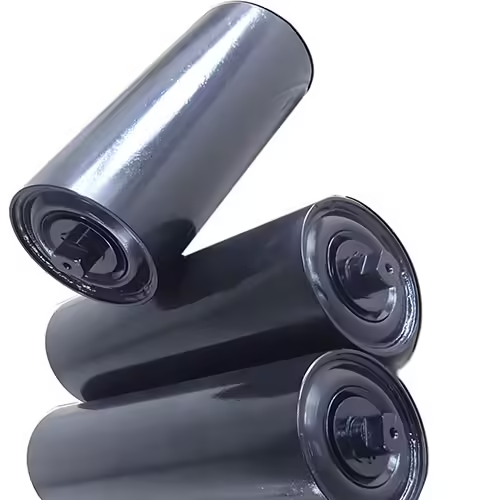Rollers are essential components in conveyor belt systems and are widely used in various industries, including mining, ports, and logistics. While rollers are generally durable, they can still suffer from premature wear, failure, or production interruptions if not properly maintained. Therefore, regular roller maintenance is crucial, significantly extending their service life and improving equipment efficiency.
This article provides some tips for roller maintenance and care to help you maintain the stability of your conveyor system and extend the life of your rollers.
- Regularly Clean Rollers
The operating environment of rollers is often complex, especially in mines and ports. During operation, rollers come into contact with materials such as dirt, sand, and coal. These materials accumulate on the roller surface and bearing seats, increasing friction and accelerating wear. Therefore, regular roller cleaning is essential.
Cleaning Frequency: A thorough cleaning is recommended monthly, especially for high-load or harsh operating environments.
Cleaning Method: Use high-pressure air or water to remove dust and debris from the roller surface. Avoid scratching the roller with hard objects to avoid damaging the surface coating or bearing seats.
- Check the lubrication condition of the roller bearings.
Roller bearings are critical components that determine the performance and lifespan of rollers. Lack of lubrication or improper lubrication can lead to premature bearing wear, overheating, and even failure. To ensure long-term, stable operation of roller bearings, regular lubrication checks are essential.
Lubrication method: Use high-quality grease that meets the requirements of roller bearings. Check the quality of the grease and avoid using contaminated or aged grease.
Lubrication interval: Depending on the operating environment, it is generally recommended to lubricate rollers every three months. In high-temperature or heavy-load environments, the lubrication interval may be shortened.
- Monitor the operating status of rollers. Regularly monitoring the operating status of rollers can help identify potential problems. Common roller failures include roller binding, bearing damage, and roller deflection.
Sound check: Listen for any unusual noises while the roller is running. Unusual noises are often caused by bearing damage or foreign matter.
Temperature check: Regularly check the temperature of the roller bearings. Excessively high temperatures may indicate poor lubrication or bearing wear.
Visual Inspection: Regularly inspect the rollers to ensure they are free of visible damage, cracks, or deformation. If any damage is detected, replace them immediately.
- Regular Inspection and Replacement of Rollers
Although rollers have a long service life, wear is inevitable over time. Rollers wear more rapidly under high loads, high speeds, and harsh environments. Therefore, regular inspection and replacement of rollers is crucial to maintaining smooth conveyor system operation.
Inspection Frequency: We recommend a comprehensive inspection every six months to check the rollers for excessive wear, deformation, cracks, or damage. If any abnormalities are found, replace them promptly.
Replacement Criteria: If a roller shows visible wear, deformation, looseness, or is no longer operating smoothly, replace it immediately to prevent impacts on the efficiency and safety of the entire conveyor system.
- Preventing Roller Surface Corrosion
Rollers are often exposed to humid or corrosive environments during operation, particularly in industries such as ports, metallurgy, and chemicals. Prolonged exposure to these conditions can cause corrosion on the roller surface, affecting its proper function and lifespan.
Anti-corrosion coating: Treating the roller surface with an anti-corrosion coating can effectively slow the corrosion process.
Waterproofing: When operating in humid environments, ensure the rollers are properly sealed to prevent moisture from entering the rollers.
- Ensure Proper Adjustment of the Conveyor Belt System
The quality of the rollers depends not only on their own quality but also on the operating condition of the conveyor belt system. Excessive belt tension and speed can cause excessive stress on the rollers, shortening their service life.
Tension Adjustment: Ensure the conveyor belt has appropriate tension, avoiding excessive tension or looseness.
Alignment Adjustment: Check the conveyor belt for deviation or unevenness to ensure that the belt runs evenly along the rollers.




